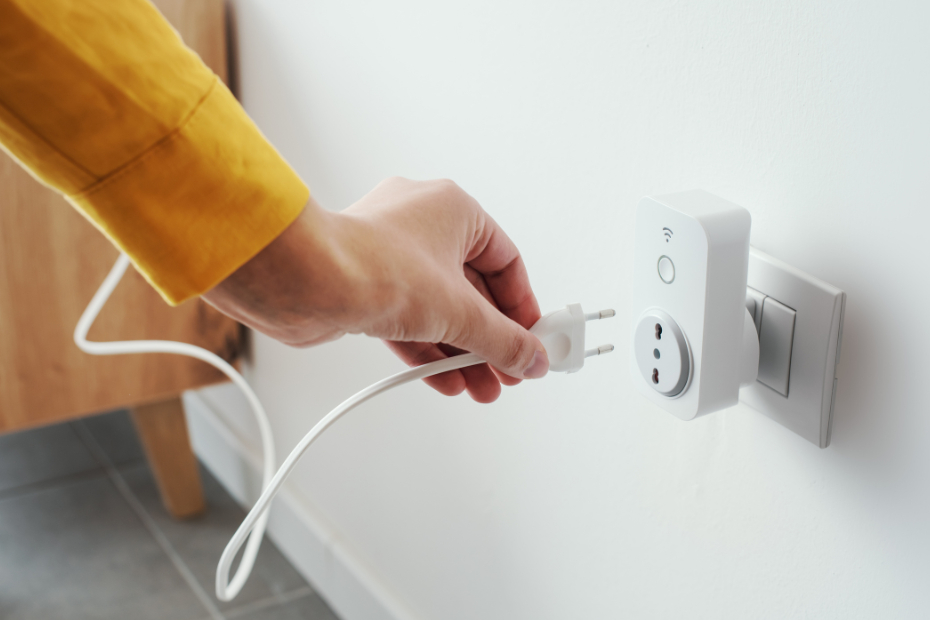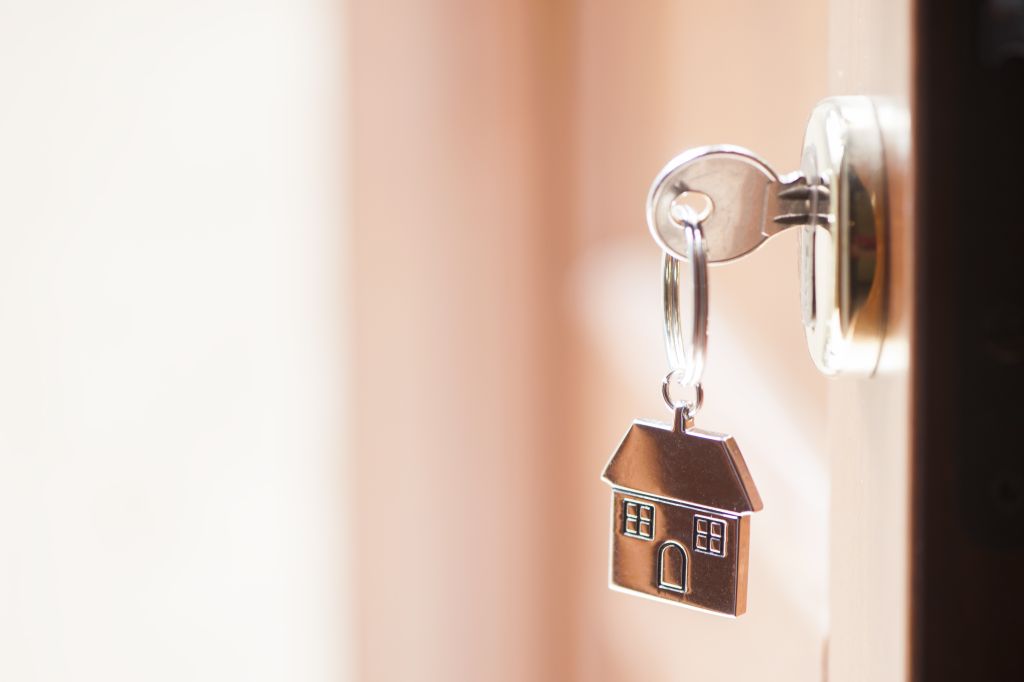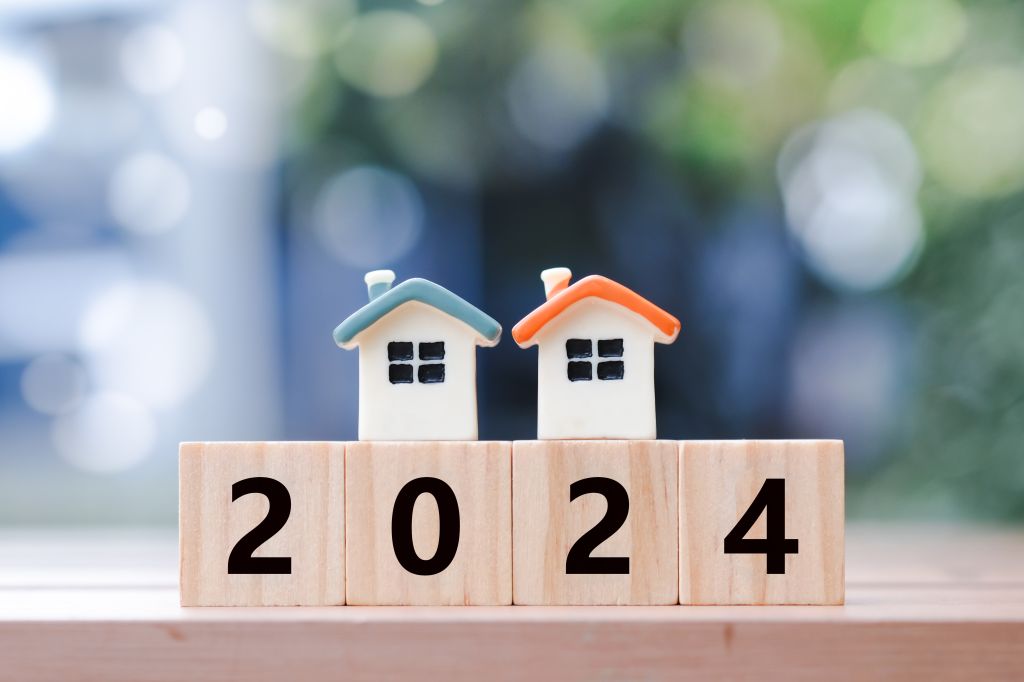Published July 28, 2023 • 5 Min Read
The other big benefit to making these investments? They can to help lighten your impact on the environment. If you spot the ENERGY STAR® logo on the items you’re checking out, that can help bring further peace of mind that you’re opting for a choice that’s been officially tested for energy efficiency.
So what can you actually get for under $100? Let’s take a look at some of the most useful and easy-to-use items on the market right now.
The costs we’ve included are average prices at the time of publish, and will vary depending for each product.
Energy-efficiency around the home
1. Smart plugs
Cost: $10 – $50
You already have your wifi hooked up to your phone, laptop, and smart tv. But how about your plugs? These nifty products fit into the wall outlets around your home. Once they’re in, you can control the power coming from that outlet using your phone or a remote. They’re handy because electrical items still use power when they’re plugged in, even if you’re not using them at the time, so you can make things much easier by switching off the kettle and toaster remotely.
Even better: if you’re the type to worry that you left the iron or hair straighteners switched on, you can double check the smart plug is turned off using your phone.
2. Smart light bulbs
Cost: $10 – $30
These typically work by syncing with your phone or a remote. A great place to put a smart light bulb initially is in the bedroom. Opt for one that can be dimmed to different levels of warmth, set the timer to sync with your alarm, and you’ll have an easy, low-cost version of a sunrise alarm clock that gradually get brighter in order to ease you peacefully into the day.
Added bonus: As these bulbs can be controlled remotely, you can also use them to make it look like there are people at home when you’re away on vacation by having the smart lights switch on and off at different times of day, helping to up your home-security game.
3. LED light bulbs
Cost: As low as $1 for one
While smart light bulbs are nearly always LED bulbs, these are so worth investing in even when they’re not ‘smart’. They just last much longer than traditional incandescent light bulbs — as in, up to 25 times longer — and they use up to 90% less energy, so though they cost a few dollars more, they’re going to reduce your electricity bill in no time
4. Smart thermostat
Cost: Around $100 for basic model
Why have the heating running high when no-one’s at home? With a smart thermostat, you can make sure you’re not heating the house unnecessarily — and you can set the temperature so it’s nice and toasty for when everyone’s coming home in the evening.You can find decent, basic smart thermostat models for just under $100; they will let you fine-tune the ideal temperature for individual rooms for your home, but fancier models can run up to $300.
5. Low-flow shower head
Cost: Around $50
No-one wants to experience a shower with hardly any water pressure. Opt for a low-flow shower head and, happily, you’re still going to have a satisfying wash. Low-flow shower heads use less water, which in turn means you’re using less energy to heat that water.
But they also use technology to give you the feeling of being immersed in hot water. Most work by aerating. What that means is that the shower head pulls the surrounding air into the water, creating fuller drops and a soft, ‘misty’ shower experience. Alternatively, laminar technology works differently, by squeezing the water through tiny holes, producing a hard flow of water.
Most options run under $100, but there are fancier options that cost up to $300.
Whichever you purchase, you really are making a difference here. The U.S. Environmental Protection Agency estimates that the average family’s showers add up to almost 17% of all indoor water use — and the use of 40 gallons of water per day.
6. Bidet
Cost: $30 – $50, or wait for a more expensive model to go on sale
Millions of trees get cut down each year to meet toilet paper demand. And while the market is growing for TP that takes less of a toll on the environment (such as by being made from bamboo and coming into customers’ hands unbleached), it still takes water and energy to produce each roll.
How to get around that? Enter the bidet. A no-frills model will set you back just under $100. They’re easy to attach to your toilet seat without much fuss.
This new style of bathroom behaviour might take a little getting used to at first, but bidets in many parts of Asia and Europe, and, as one bidet company founder points out, “If a bird pooped on you, would you wipe it off with paper, or wash it away?”
Energy-efficiency in the yard
7. Solar-powered lights
Cost: $20 – $60
Outdoor solar lights aren’t going to add a cent to your energy bill — after all, they run exclusively on sunlight. String your solar-powered lights along the garden fence and you’ll have a pretty way of lighting up backyard barbecues all summer.
One thing you’ll want to make sure of is that the lights are in a place that gets consistent sun — that way, you won’t find yourself sitting in the dark after dusk.
8. Smart sprinkler
Cost: Around $80, or wait for a sale
Not only can you run these so that they spray your prized rose bushes at, say, 2pm on a Tuesday, but they also typically sync up to local weather forecasts, so if a thunderstorm is set to roll in at 2:05pm, your smart sprinkler will know not to run. Instead it’ll let the rain clouds take care of hydrating your favourite flowers instead.
This article is intended as general information only and is not to be relied upon as constituting legal, financial or other professional advice. A professional advisor should be consulted regarding your specific situation. Information presented is believed to be factual and up-to-date but we do not guarantee its accuracy and it should not be regarded as a complete analysis of the subjects discussed. All expressions of opinion reflect the judgment of the authors as of the date of publication and are subject to change. No endorsement of any third parties or their advice, opinions, information, products or services is expressly given or implied by Royal Bank of Canada or any of its affiliates.
Share This Article






